INTERNACIONAL
Timothy McVeigh, el supremacista que se creyó patriota y mató a 168 personas con 1800 kilos de explosivos
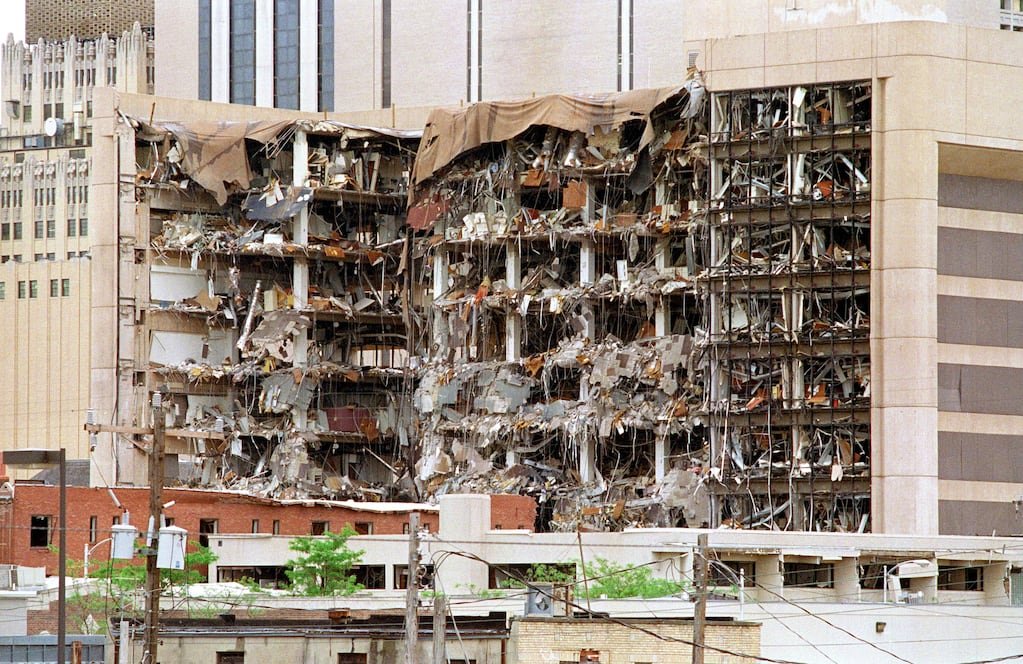
Una lluvia de vidrio, hormigón y acero
En una primavera de irremediable cielo azul, una camioneta amarilla de la empresa de alquiler de autos Ryder Rental avanzaba por el centro de Oklahoma City. Era el miércoles 19 de abril de 1995 por la mañana. A las 09.00, el vehículo se estacionó frente al Edificio Alfred P. Murrah, un complejo de hormigón perteneciente al gobierno de los Estados Unidos, en el 200 N.W. 5th Street. El conductor se bajó y se fue lo más pancho. Dos minutos después, estalló la carga de 1800 kilos de explosivos que estaban en la camioneta con la fuerza suficiente para destrozar un tercio de la estructura de siete pisos.
Llovían vidrio, hormigón y acero. Entre los escombros se mezclaban indiscriminadamente adultos y chicos, vivos y muertos.
El conductor de aquella camioneta, Timothy James McVeigh, de 27 años, ya se encontraba a salvo de la devastación. Satisfecho, estaba convencido que había actuado para defender la Constitución del país. Se consideraba un guerrero vengador y un héroe. ¿De qué batalla? ¿De qué guerra?
Leé también: La adolescente de 16 años que disparó a mansalva contra una escuela primaria porque no le gustaban los lunes
Precavido, a pocas cuadras de distancia, llevaba tapones para los oídos para protegerse del rugido de una explosión tan potente que levantó a los peatones del suelo. Una enorme bola de fuego eclipsó el sol y el lado norte del edificio se desintegró. Señales de tráfico y parquímetros fueron arrancados del pavimento. Los cristales se hicieron añicos y volaron como balas, alcanzando y mutilando a peatones a cuadras de distancia.
En la guardería infantil la devastación fue terrible. Los pisos superiores se derrumbaron. Los equipos de rescate llegaron rápido y buscaron entre los escombros para ayudar a desenterrar a los heridos y retirar a los muertos. La explosión mató a 168 personas (19 bebés) y más de 500 resultaron heridas. El terrorismo local había llegado con furia, y el terrorista era el vecino de al lado, que se alejaba por la I-35 (Interestatal 35).
Una detención azarosa
El policía de la Patrulla de Oklahoma, Charlie Hanger, recorría la I-35. Estaba a unos 120 kilómetros de la zona del desastre cuando vio un vehículo Mercury Grand Marquis de 1977 destartalado que no tenía patente. Detuvo al conductor y salió de su patrulla. Timothy McVeigh, que había salido de la zona del impacto con ese vehículo, se bajó. Al menos 168 personas murieron en 1995 en el atentado de Oklahoma City. (Foto: AFP)
McVeigh explicó que acababa de comprar el coche y que por eso no tenían aún la matrícula. Hanger le preguntó si tenía seguro y factura de compraventa, McVeigh le dijo que todo se lo enviarían por correo a su casa. Luego le entregó su carnet de conducir. Fue en ese momento que el policía notó un bulto bajo la campera de McVeigh. “¿Qué es eso?”, preguntó el policía. McVeigh le dijo que era un arma. Hanger apuntó con su arma a la cabeza de McVeigh, le sacó la Glock 9 mm, un cargador, un cuchillo, lo esposó y lo metió en la patrulla.
Después de confirmar con la base que McVeigh no tenía antecedentes, le informó que su permiso para portar armas en Nueva York no era legal en Oklahoma. Lo llevó directo a la cárcel.
De camino, McVeigh escondió una tarjeta de presentación en la patrulla. La tarjeta iba a causarle problemas a quien se la había suministrado: el traficante de armas Dave Paulson. En la tarjeta, McVeigh había escrito: “TNT 5 $/barra, necesito más” y “Llamar después del 1 de mayo, a ver si puedo conseguir más”.
En la cárcel, McVeigh fue fichado por cuatro delitos menores:
- portación ilegal de un arma
- transporte de un arma de fuego cargada en un vehículo motorizado
- no exhibir una matrícula vigente.
- no tener comprobante de seguro.
Habría sido juzgado rápidamente a no ser que el juez Danny Allen estaba ocupado en un intrincado y largo caso de divorcio. La audiencia de fianza de McVeigh se fijó para el viernes 21 de mayo.
Los acontecimientos ocurrían en otras partes
En el FBI, la mayoría de los agentes creía que el atentado se debía a terroristas extranjeros, menos Clinton Van Zandt. Para él, el autor debía ser un hombre blanco de veintitantos años y posible miembro de una milicia marginal. Por su lado, el experto en terrorismo Louis R. Mizell Jr. observó que la fecha del ataque coincidía con el Día del Patriota, aniversario de la Batalla de Concord de la Guerra de Independencia, venerada por el movimiento miliciano.
Cuando se encontró el paragolpes trasero de la camioneta amarilla que había explotado, la patente aún era legible. Este dato llevó hasta el nombre de Robert Kling, que había firmado el contrato de alquiler del vehículo. Kling era el alias de McVeigh.
Los policías fueron a la agencia de alquiler de coches Ryder. El propietario, Eldon Elliot, y sus empleados ayudaron a confeccionar dos identikits: uno del hombre que alquiló la camioneta y el otro de un tipo que había estado en la oficina aproximadamente al mismo tiempo. Los llamaron “John Doe 1” y “John Doe 2”. Los retratos se exhibieron por toda la zona de la agencia. La noche después del atentado, Lea McGown, gerenta del Dreamland Motel dijo haber reconocido al hombre al que el FBI llamaba Kling.
La señora McGown reveló que el hombre se había registrado con el nombre de Timothy McVeigh. Y que había estacionado una camioneta Ryder grande en el estacionamiento del motel. Era amarilla, agregó. Además, al registrarse, dio como dirección la granja Nichols, en Decker, Michigan.
La presión para encontrar a un sospechoso del atentado era intensa
El país estaba convulsionado. Todos tenían presente el atentado contra el World Trade Center en Nueva York del 26 de febrero de 1993. Entonces, terroristas islámicos al mando de Ramzi Yousef detonaron 680 kilos de explosivos que causaron la muerte de 6 personas y heridas a más de 1000. La mayoría en los Estados Unidos asumió que los culpables del atentado de Oklahoma también eran extranjeros.

McVeigh trasladado a los tribunales.
En el Centro Nacional de Información Criminal de Washington, las computadoras generaron un informe: el agente Hanger también había elaborado un informe sobre McVeigh, detenido por acusaciones no relacionadas con el atentado. Los agentes del FBI fueron a entrevistar al preso.
Cuando le informaron que lo interrogarían sobre el atentado, McVeigh exigió un abogado.
Casi al mismo tiempo, otro hombre quedaba detenido en el pequeño pueblo, Herington, Kansas, a unos 320 kilómetros de distancia. Era Terry Nichols, de 40 años. Cuando estas detenciones se difundieron, a la gente le costó aceptar o asimilar que los dos sospechosos del atentado de Oklahoma no eran árabes sino estadounidenses que se decían patriotas.
Timothy McVeigh
El principal sospechoso había nacido el 23 de abril de 1968. Tenía dos hermanas. Creció en Pendleton, Nueva York, un pequeño pueblo al sur de la frontera con Canadá, donde su población era en su mayoría blanca, trabajadora y cristiana. El papá de Tim, Bill, trabajaba en una fábrica local de radiadores de automóviles, pero fue su abuelo, Eddie McVeigh, quien más influyó en el niño. Lo introdujo en el mundo de las armas. A los 13 años, su abuelo le regaló un rifle calibre .22.
Su familia vivía una turbulencia constante. A su madre, Mickey, le gustaba socializar y trasnochar. Se debatía entre la diversión y la familia. Finalmente, cuando Tim era adolescente, los abandonó. En 1986 ella y Bill finalmente se divorciaron.
Fue en su adolescencia que descubrió Los diarios de Turner. Se trata de una novela del exfuncionario del Partido Nazi estadounidense, William Pierce, que la escribió bajo el seudónimo de Andrew Macdonald. En ella creo al personaje “Earl Turner” que expresa su odio por las leyes de control de armas al colocar un camión bomba en la sede del FBI en Washington. Aclama a Adolf Hitler y rechaza a los negros y los judíos a quienes “hay que aniquilar”.
Leé también: La adolescente de 16 años que disparó a mansalva contra una escuela primaria porque no le gustaban los lunes
Casi al mismo tiempo, se obsesionó con la película Amanecer Rojo, con el actor Patrick Swayze, que se refiere a un grupo de estadounidenses que se enfrenta a un ejército comunista invasor. Es decir la letanía de su abuelo sobre el amor por las armas y una película de acción fueron sus inspiraciones.
Como McVeigh necesitaba fondos para financiar sus fantasías, trabajó como guardia de seguridad armado en un servicio de vehículos blindados. Tenía 20 años, uniforme y un arma. Pero quería más. El 24 de mayo de 1988, se unió al Ejército. Allí conoció a dos hombres que lo acompañarían en su viaje hacia el terrorismo, Terry Lynn Nichols, 12 años mayor, y Michael Fortier, un joven de su misma edad.
McVeigh, un soldado destacado
En 1991, estalló la Guerra del Golfo y la Primera División de Infantería de McVeigh fue enviada al Golfo Pérsico para servir en la Operación Tormenta del Desierto. McVeigh destacó como soldado y al volver a su casa lucía varias condecoraciones, incluida la Estrella de Bronce.
Pero la vida civil lo decepcionó. Parecía que nadie se interesaba por un héroe de guerra y su resentimiento crecía. Despotricaba contra el gobierno y el control de armas. Al final, decidió buscar a sus antiguos compañeros del ejército, Michael Fortier, que estaba en Arizona y Terry Nichols establecido en Michigan.
Eran sus almas gemelas que acompañaban su retórica violenta manifestada en panfletos y pegatinas para parachoques con mensajes como: “A los políticos les encanta el control de armas” o “Teme al gobierno que teme a tu arma” y “Un hombre con un arma es un ciudadano, sin arma es un súbdito”.
La gota que no debió haber caído
El 28 de febrero de 1993, agentes del FBI y de la ATF (Agencia de Alcohol, Tabaco y Armas de Fuego), rodearon un rancho en Waco por el delito de acumulación de armas. Era la propiedad del grupo religioso Davidianos, encabezado por David Koresh. El asedio y los tiroteos duraron 51 días y terminó con 76 muertos, incluso bebés y el propio Koresh.
McVeigh fue a Waco a apoyar a Koresh con el argumento de que el gobierno estaba violando el derecho de la secta a portar armas. El cerco policial era tan estricto que no se pudo acercar. Se fue de allí a ver a su amigo Michael Fortier, que vivía con su esposa en una casa rodante. A pesar de ser muy cercanos, Timothy no pudo soportar que Michael se drogara todo el tiempo y decidió ir solo a las ferias de armas de la región. La foto policial de la detención de McVeigh.
La gente de las ferias de armas pensaba como él. Trabó amistad con Roger Moore, un armero experto en balística que lo invitó a su rancho de Arkansas. Tenía un arsenal, lleno de armas y explosivos. Cuando Timothy llegó a la granja de Terry Nichols, en Decker, Michigan, los medios continuaban dando informes sobre el largo tiroteo de Waco. Allí practicaron armar explosivos y los amigos se alimentaron recíprocamente con un discurso racial de odio. Cuando finalizó la hecatombe de Waco, el 19 de abril de 1993, estaban decididos a detener al FBI y a la ATF.
Timothy quiso que su amigo Fortier se sumara, pero este se negó. Hasta le contó el plan a su esposa Lori. El plan era volar un edificio del gobierno federal.
La preparación
McVeigh y Nichols fabricaron varias bombas, con materiales que compraron bajo el alias de “Mike Havens”. Otros componentes como detonadores o nitrometano líquido, los robaron. Timothy envió a Nichols a robarle al armero Roger Moore.
Para pagar su despreciable empresa, Nichols robó a punta de pistola al armero Roger Moore. Le sustrajo armas, oro, plata y joyas, por un valor de 100.000 dólares. Nichols también robó la camioneta de Moore para llevarse el botín. La policía hizo una lista de los visitantes del rancho y surgió el nombre de McVeigh.
A pesar de la negativa a participar de Fortier, sus amigos McVeigh y Nichols fueron a su casa rodante. Escondieron los explosivos robados en un almacén cercano y se dedicaron a planear cómo sería la bomba. El combustible que buscaba era hidracina anhidra, combustible para cohetes. Como costaba muchísimo, se decidió por nitrometano.
A mediados de octubre de 1994, los planes de McVeigh se complicaron repentinamente al recibir la noticia de la muerte de su abuelo y regresó a su casa en Pendleton, Nueva York.
A mediados de diciembre de 1994, ya estaba casi todo listo
McVeigh fue con Fortier a Oklahoma City para mostrarle el edificio que pretendía volar y la ruta que tomaría para alejarse de él antes de la explosión. Se despidieron.

La remera que usó McVeigh durante el atentado.
Timothy y Terry Nichols ultimaron los detalles en los meses siguientes. El 18 de abril de 1995, apilaron los componentes de la bomba en una camioneta y se dirigieron al lago Geary para prepararla. Al terminar, Nichols se fue a su casa y McVeigh se quedó en el vehículo Ryder.
Pasó la noche en un estacionamiento. Tenía puesta su camiseta favorita que en la parte delantera tenía una imagen de Abraham Lincoln con el lema “sic semper tyrannis”, es decir las palabras que gritó el actor John Wilkis Booth cuando mató a Lincoln de un tiro. Significa: “Así siempre a los tiranos”. En parte posterior de la camiseta había un árbol que goteaba sangre de sus ramas. Decía: «El árbol de la libertad debe ser refrescado de vez en cuando con la sangre de patriotas y tiranos».
El juicio contra los terroristas fue uno de los más costosos del país
El proceso comenzó el 24 de abril de 1997. El defensor de McVeigh, Stephen Jones, nada pudo hacer para menguar el odio que despertaba su cliente. Apostaba a desbaratar la cantidad de prueba circunstancial que había contra Timothy. Enfrente, el fiscal Joseph Hartzler, tenía reputación de construir casos convincentes con base en pruebas circunstanciales; después de todo, nadie había situado a McVeigh en la escena del crimen.
El juez Robert Matsch, decretó que McVeigh y Nichols tendrían juicios separados para garantizar un trato justo. Al gobierno no le gustó nada. Por eso se llevó el juicio de Oklahoma a Colorado. Sin embargo, la gran cantidad de testigos favoreció a la fiscalía y, en última instancia, a la justicia. Hubo 141 testigos de cargo, frente a solo 27 de la defensa.
Los testimonios más contundentes en contra del acusado fueron de personas a las cuales le tenía una confianza ciega: su hermana Jennifer y sus amigos Lori y Michael Fortier.
Lori Fortier contó todos los preparativos y sumó: “Pusimos las noticias temprano esa mañana… y vimos lo que pasó… vimos que el edificio había volado, y supe de inmediato que era Tim. Nos dijo cuál era el objetivo”.
Leé también: Era médico, ganó un Oscar y fue la última víctima de una de las guerras civiles más sangrientas de la historia
El jurado tardó tres días en decidir: Timothy James McVeigh había colocado la bomba en el edificio Murrah y debía morir.
Dos meses después, un helicóptero llevó a McVeigh de la prisión federal de Colorado, llamada “La Supermáxima”, hacia los tribunales. El juez Matsch sentenció formalmente a McVeigh a la pena capital.
Terry Nichols, por su parte, fue condenado a 161 prisiones perpetuas. El jurado no se puso de acuerdo sobre si aplicarle la pena de muerte.
La ejecución de Timothy McVeigh se realizó el 11 de junio 2001 por inyección letal. Fue declarado muerto a las 7.14. Su cuerpo fue cremado.
Timothy McVeigh
INTERNACIONAL
Fox News Politics Newsletter: Adams to back Cuomo in NYC mayoral race
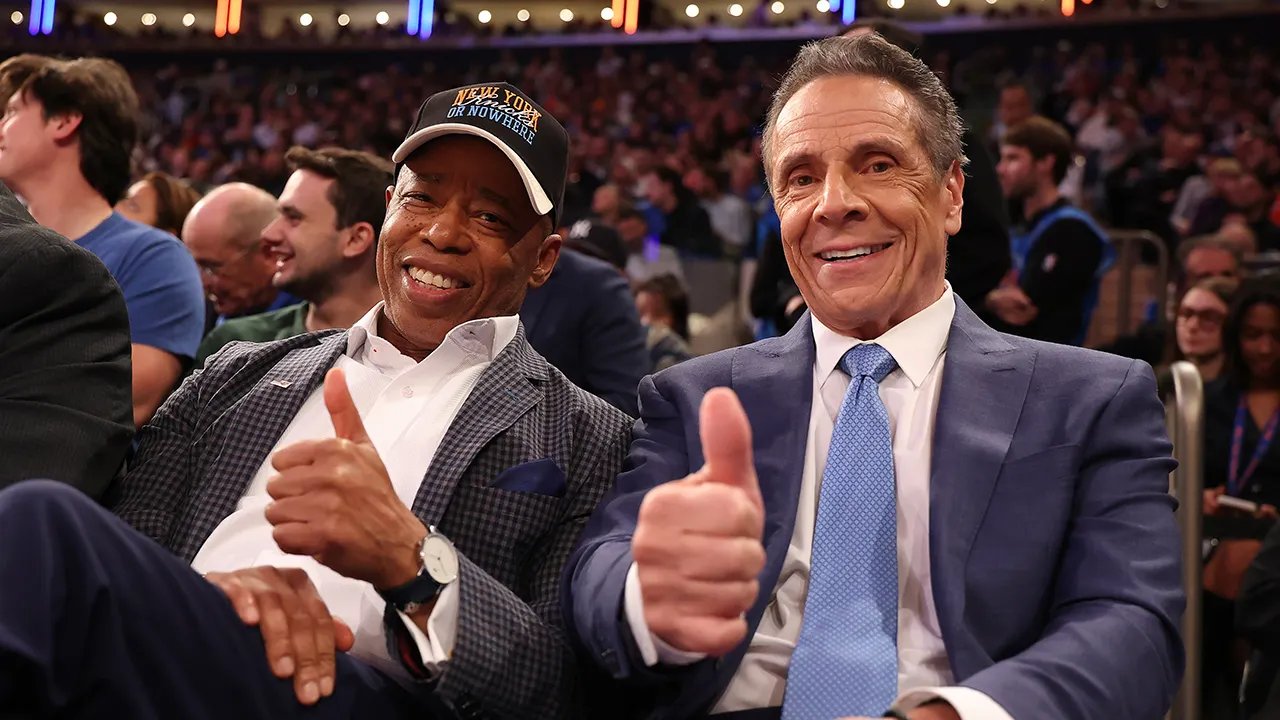
NEWYou can now listen to Fox News articles!
Welcome to the Fox News Politics newsletter, with the latest updates on the Trump administration, Capitol Hill and more Fox News politics content. Here’s what’s happening…
–Red state university student caught on video threatening lives of Charlie Kirk supporters: ‘Watch your neck’
-Curtis Sliwa vows to be Zohran Mamdani’s ‘worst nightmare’ if the Democratic socialist wins NYC mayoral race
-Undercover video exposes what Spanberger’s campaign organizer really thinks of her: ‘What the f—‘
NYC Mayor Adams to endorse Cuomo in race against Mamdani
New York City Mayor Eric Adams will endorse former New York Gov. Andrew Cuomo in the city’s mayoral race as he faces off against Democratic nominee Zohran Mamdani.
«As spokesman for Mayor Eric Adams, I can confirm that the Mayor will endorse former Governor Andrew M. Cuomo for mayor and intends to campaign alongside him,» Adams’ spokesman, Todd Shapiro, said in a statement to Fox News. «The time and locations for their joint appearances are currently being finalized.»
Adams declined to answer questions about Cuomo at an unrelated press conference Thursday morning…READ MORE.
New York Mayor Eric Adams poses with Independent candidate former New York Gov. Andrew Cuomo after Cuomo participated in the second debate for the upcoming mayoral election on Wednesday evening. (Al Bello/Getty Images)
White House
HOMEGROWN POWER: Apple building American-made AI servers ahead of schedule in new Houston facility, answering Trump call
NEW DETAILS: SCOOP: Trump’s Memphis crime crackdown locates dozens of missing kids, removes 109 gangbangers from streets
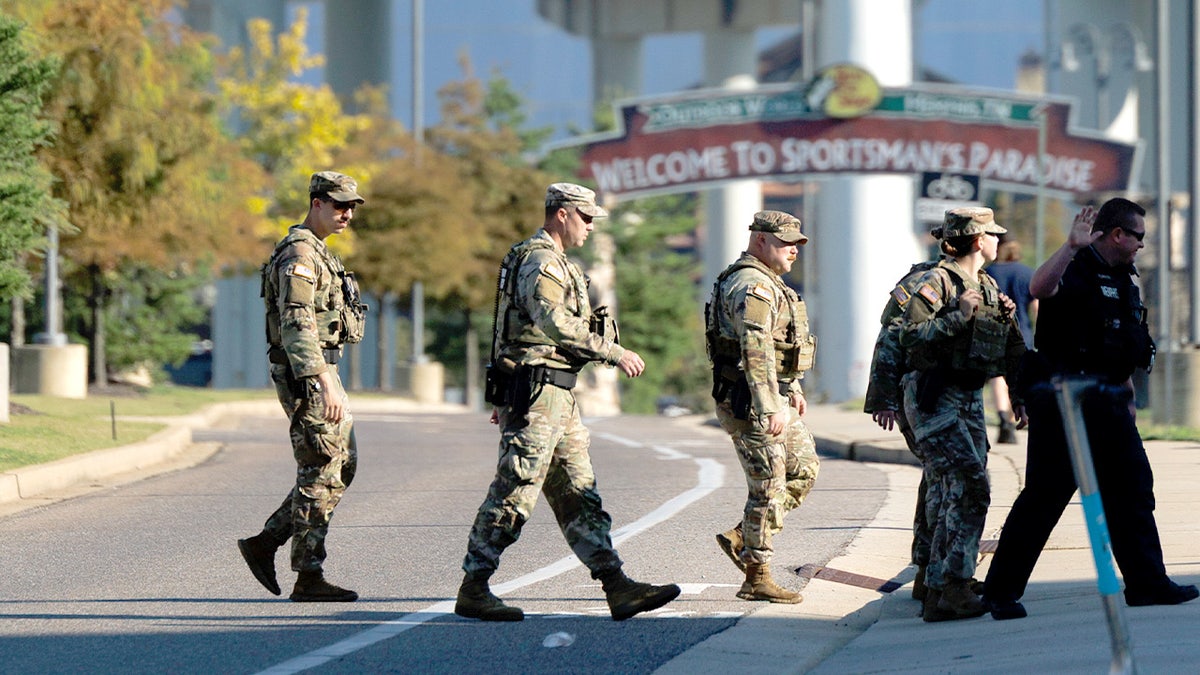
National Guard members began patrolling Memphis, Tennessee, in October as part of a federal task force established by President Donald Trump to combat what the administration says is violent crime in the city. (Brett Carlsen/Getty Images)
NO PEACE TALKS: Trump ‘not interested’ in de-escalation with ‘unhinged’ leader of Colombia, White House says
ON PAUSE: Trump freezes out Putin for lack of ‘enough action’ toward peace — future talks uncertain
BLUNT DIPLOMACY: Inside Trump’s ultimatum that forced Netanyahu to the table: ‘You can’t fight the world’
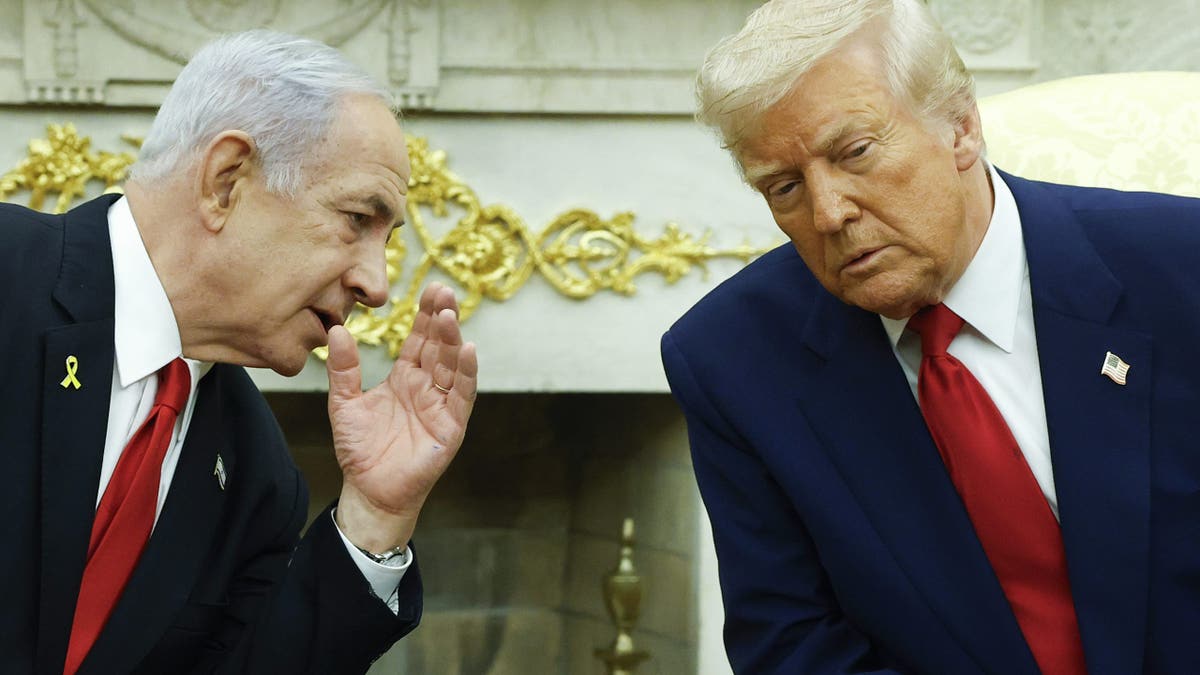
Israeli Prime Minister Benjamin, left, talks to President Donald Trump during a meeting in the Oval Office of the White House April 7, 2025, in Washington. (Kevin Dietsch/Getty Images)
World Stage
SKY VIOLATIONS: Russia violates NATO airspace in Lithuania amid Putin warning on long-range missiles
‘AMAZING BLESSING’: Vance visits church where Christians believe Jesus was crucified, resurrected amid Israel-Hamas ceasefire
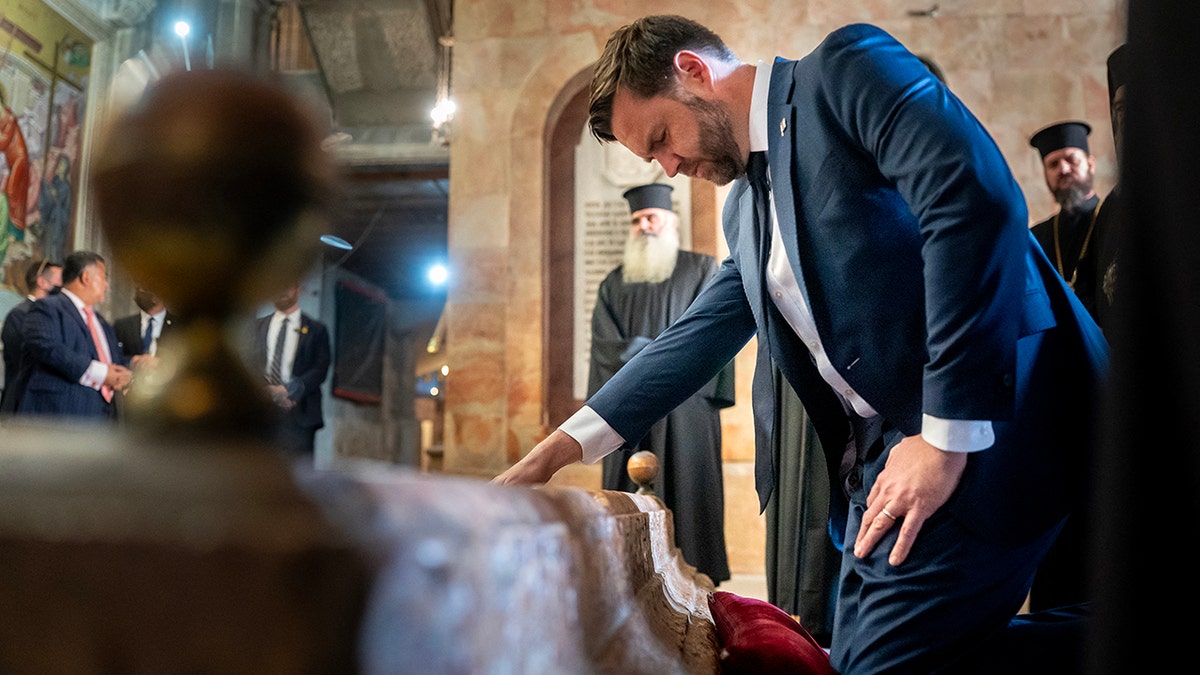
Vice President JD Vance tours The Church of the Holy Sepulchre in the Old City of Jerusalem Oct. 23, 2025. (Nathan Howard/Pool/AFP via Getty Images)
NO MORE GAMES: After waffling between Russia and Ukraine, Trump slaps Kremlin with oil sanctions
Capitol Hill
SNAP OUT OF IT: Democrats under fire as food stamp funds run dry: 42 million Americans caught in shutdown fight
NO PAY FOR YOU: Essential workers left unpaid after Senate Democrats kill pay bill
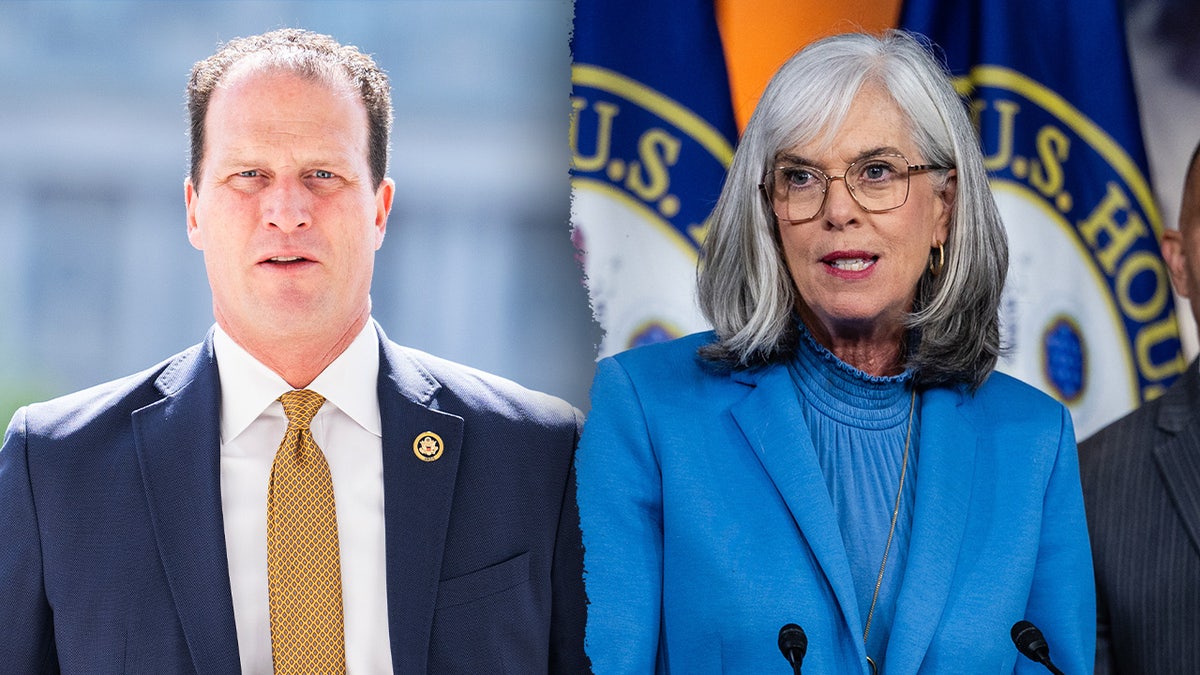
Republican Study Committee Chairman August Pfluger is criticizing House Minority Whip Katherine Clark’s comments in a recent interview on the government shutdown. (Tom Williams/CQ-Roll Call, Inc via Getty Images; Eric Lee/Bloomberg via Getty Images)
HOSTAGE POLITICS: Top Republican slams Katherine Clark for admitting suffering families are «leverage» in shutdown battle
SOCIAL-IST STANDING: Bernie Sanders defends Maine Senate candidate under fire for wild Reddit comments
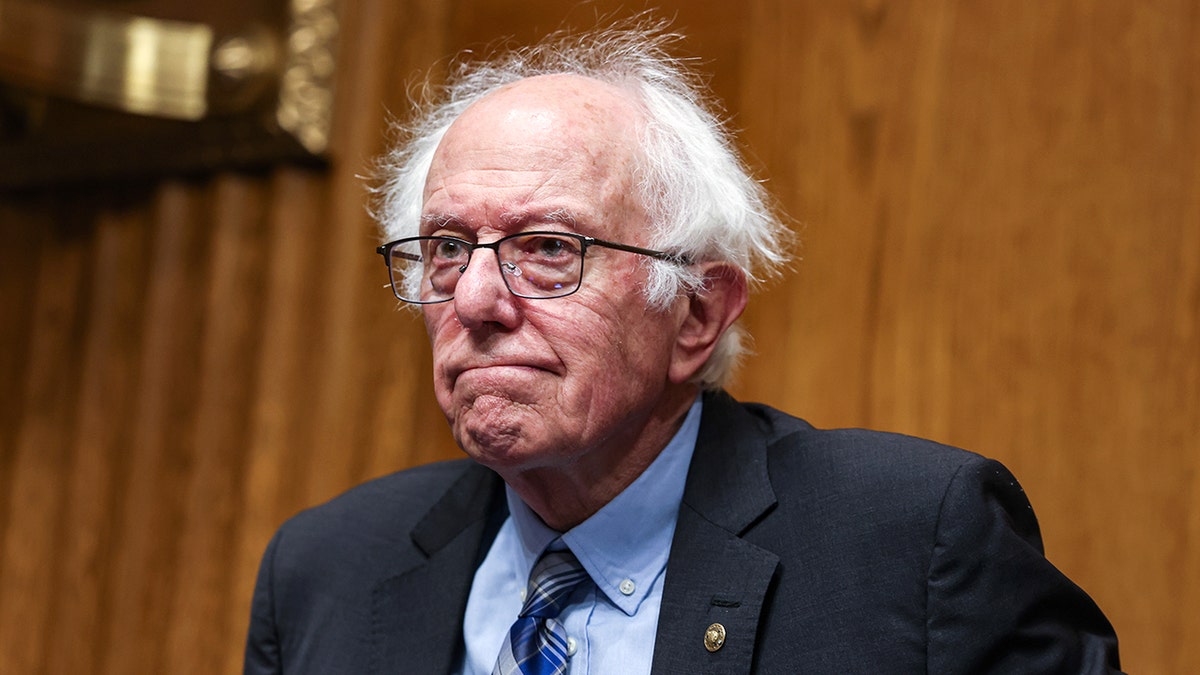
Senator Bernie Sanders, an Independent from Vermont and ranking member of the Senate Health, Education, Labor, and Pensions Committee, arrives for a confirmation hearing in Washington, July 16, 2025. (Valerie Plesch/Bloomberg via Getty Images)
Across America
HALF IN, HALF OUT: Trump yet to endorse in VA governor’s race — but also kept Youngkin at arm’s length
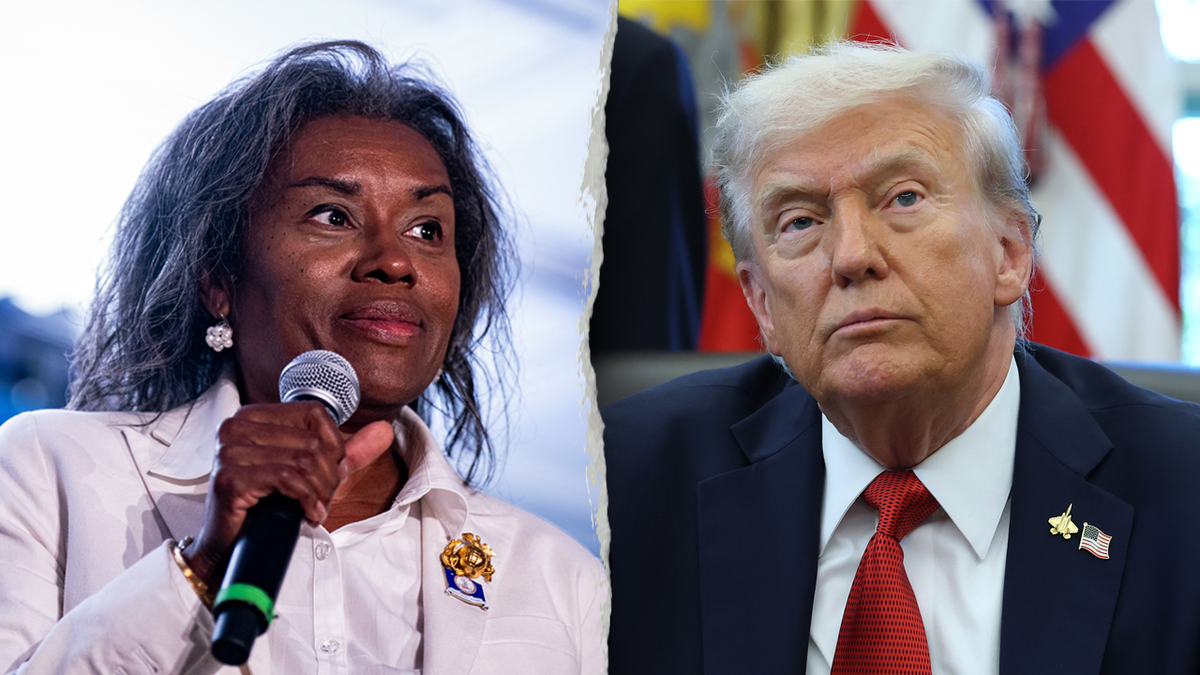
Virginia Lt. Gov. Winsome Sears, left; President Trump, right. (Al Drago/Getty Images; Anna Moneymaker/Getty Images)
MIXED BAG: New poll in key showdown for Virginia governor indicates single-digit race
FOOD FIGHT: Youngkin declares state of emergency over «Democrat Shutdown» depleting food stamp benefits for nearly 1M Virginians
AI ATTACK: Andrew Cuomo campaign walks back controversial attack ad targeting Mamdani voters
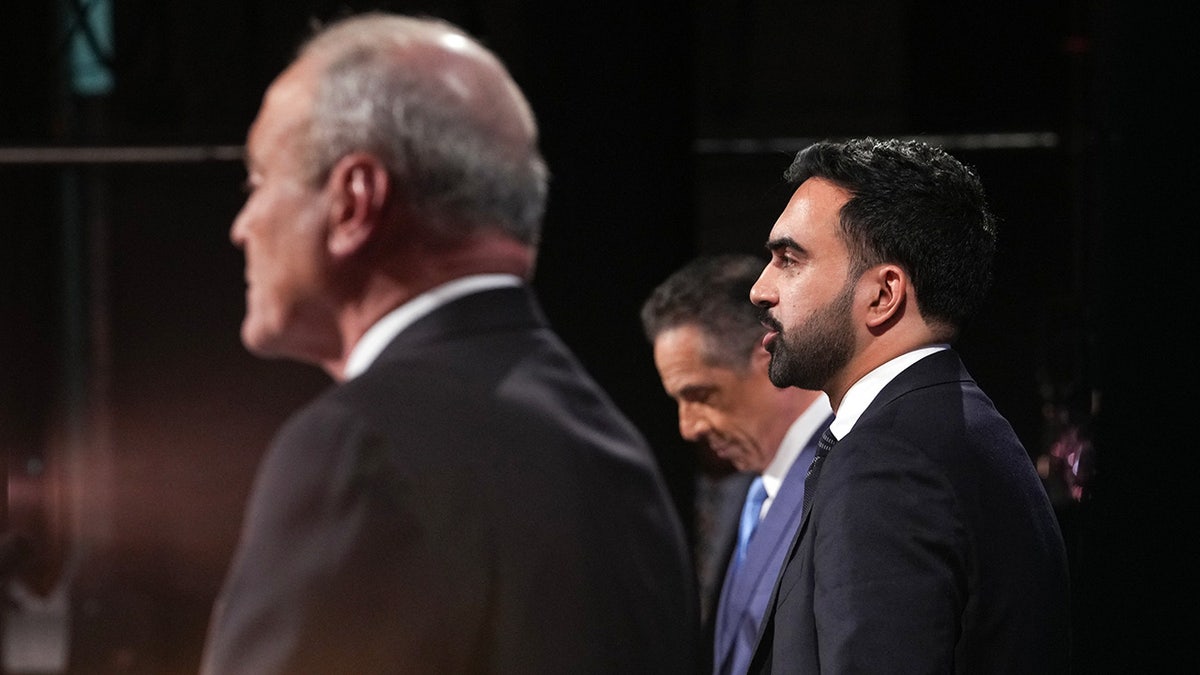
Democratic candidate Zohran Mamdani, right, Republican candidate Curtis Sliwa, left, and Independent candidate and former New York Governor Andrew Cuomo. (Hiroko Masiuke/POOL/AFP via Getty Images)
CAMPAIGN CLASH: Social media erupts after Cuomo, Mamdani rip each other during final debate: ‘Unmasked’
‘CALL TO ACTION’: NYC rabbis sound off on «unprecedented risk» Mamdani poses as hundreds of leaders sign «call to action»
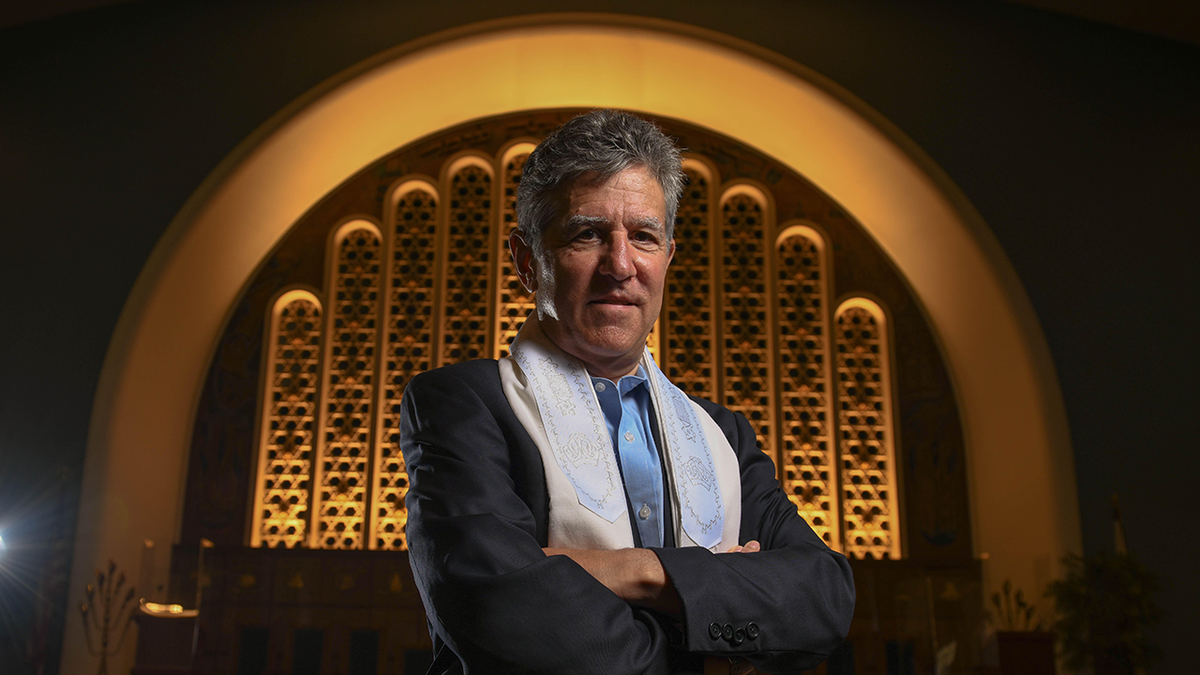
Rabbi Ammiel Hirsch accused New York City mayoral candidate Zohran Mamdani of «fanning the flames of intolerance» with two weeks until Election Day. (Shahar Azran)
SECOND GUESSING: NYC socialist mayoral candidate Mamdani’s 911 plan called «worst idea» by former NYPD sergeant
Get the latest updates on the Trump administration and Congress, exclusive interviews and more on FoxNews.com.
elections newsletter
INTERNACIONAL
Lecturas para el fin de semana: cómo radicalizar el dolor

Habitar el dolor ajeno. ¿Es posible? Tomarlo con las manos, acobijarlo en el pecho, compungirse hasta el llanto, concentrarse en su textura, no dejarlo ir. La empatía trafica esa idea, pero, como escribió Alexandra Kohan, “no podemos entrar los dos en los zapatos de uno”. El otro es el otro y, en tanto otredad, es inquietante, imposible. En ese sentido, la literatura abre una posibilidad en el espacio, la de sumergirse en una narración ficcional que, al ser un artificio, radicaliza al extremo la emoción.
En algún punto, la lectura es un vacío. Un lugar sin notificaciones ni publicidad ni imágenes identificables. Esa zona donde el lenguaje imagina la pureza. Y si entendemos que la ficción no es un sinónimo de la mentira, sino una forma de contar la verdad, el lector se permite algo imposible: habitar el dolor ajeno. Porque el dolor está en el pecho de los personajes, en la atmósfera de las escenas, en la prosa, en la trama, pero no en él, que está del otro lado, ¿a salvo? Quizás ocurra exactamente lo contrario.
“Fijate, ¿lo llegás a ver? Casi no se ve, pero ¿no te parece asombroso ese alerce solo ahí, altísimo, resaltado en la llanura? Hasta tiene el tupé de competirle el protagonismo al horizonte». Un padre con una enfermedad avanzada y su hija viajan en auto hasta Buenos Aires: se tiene que hacer un estudio. Pero se detienen en un pueblo, en una casa, alguien familiar. Él fuma, ella lo reta. “¿Cómo no fotografiarlo?“, dice mirando el árbol, él que es fotógrafo. “¿Sin luz?”, pregunta ella. “Mañana, si se despeja (…) Es la última”.

La luz queda se llama la novela que acaba de publicar Diotima. Su autor es Alejandro Pereyra, escritor, guionista, director de cine. Es brevísima y la narración se agolpa en las páginas, no con apuro, sino con intensidad. “Voy a dejar la fotografía, Romina, antes de que ella me deje a mí“. Cuando ella le pide ”no te pongas trágico», que “va a salir todo bien”, él le dice: “No entendés, Romina. No es por mi cuerpo, por esa mierda que tengo. Solo que esta foto es el punto final perfecto. La vengo pensando hace tiempo”.
Después la literatura hace su trabajo: aparecen otras voces, el paisaje se vuelve una inundación, los pensamientos flotan y las intenciones vuelan. De pronto, “todo es de verdad, hasta la dulzura de mierda”. Y Arturo, el padre, el fotógrafo, sueña con otra foto, pero no es tan fácil. “Los días son todos diferentes” pero “la noche es siempre la misma”. Y la historia va cerrándose, la enfermedad no cesa, y “ya casi no se aguanta el dolor. Pero estate tranquilo, que siempre se trató de amor. Aunque no lo entiendan”.
Cuando Marie-Pier Lafontaine entendió que solo había dos opciones, escribir o prender fuego la casa familiar, escupió Perra. Son ochenta y pico de páginas intensas que narran una dura historia de abuso. Cuando estuvo fuera de esa cárcel de anhelos reventados, el testimonio se hizo literatura. Pero lo novedoso de este libro de 2020 y traducido el año pasado por Agustina Blanco para Ediciones Godot no es este acontecimiento —¿cuántos víctimas han podido narrar sus tragedias en libros?—, sino la mirada.
“Entre todas las leyes del padre, había una de índole fundamental: no contar”, comienza Perra. “De niña, disimulaba mis deseos en textos de ficción. Dos hermanas en fuga. Perseguidas por un monstruo de dos cabezas. Huían por sombríos bosques. Se armaban con ramas, palos. Hoy ya no escondo mis deseos. Quisiera que este texto diezmara a mi familia toda”, escribe esta canadiense nacida en 1988 en Montreal, dentro de “la parte francesa”, autora también de Armas para la rabia.

Por momentos, la hoja se pone de un negro completo con frases así: “Al padre le encanta hacernos saber que piensa en nosotras cuando eyacula. Se las arregla siempre para que lo oigamos”. O también: “Los alaridos se detienen. El padre sale del cuarto de mi hermana. Carraspea. Sus pasos resuenan hasta la otra punta del pasillo. Va al encuentro de la madre”. O: “Mi hermana y yo solo con tomarnos de la mano sabemos con certeza que sobreviviremos al padre”. O: “¿Nuestros vecinos nunca oyeron nada?”
Los recuerdos no se eligen, aparecen como un relámpago en la noche, pero elegimos qué contar. Desde las primeras páginas de Corazón de león de Monika Helfer, que acaba de ser traducido por Gabriela Adamo para Edhasa, sabemos que el hermano de la narradora está muerto. Lo que sigue es una novela en retrospectiva: un personaje que ya no existe, pero que aparece, intrépido y subversivo, en las escenas ahora narradas. Las historias son delirantes y divertidas, pero tienen la inocultable pátina de la tristeza.
Entre esos recuerdos aparece el día en que su hermano conoció a su actual marido, entonces su amante. Su marido estaba de viaje, sus hijos con los abuelos; la casa y el fin de semana para el romance. Y su hermano, tocó el timbre. “Los presenté, conversamos y tomamos vino y fumamos un poco de la hierba que él cultivaba; cuando se despidió, le dijo que le caía bien y que el hecho de que tuviera una relación conmigo, su hermana, solo podía entusiasmarlo, porque todo lo que me hiciera bien lo entusiasmaba”.

“¡Johnny, acabo de romper bolsa!“ En un pueblo del interior profundo de los Estados Unidos, año 1970 y pico, una mujer está a punto de dar a luz. Vive en el campo, en una cabaña junto a su esposo entre el frío y la soledad. Tienen treinta años y han esperado con mucha ansiedad este momento. Suben a la camioneta en las primeras horas de la mañana y conducen unos cuantos kilómetros hasta el hospital con la esperanza de conocer a su hijo, el primogénito. Sin embargo el bebé nace muerto.
A grandes rasgos, esa es la historia narrada en El nadador en el mar secreto, novela breve, profunda, sensible, que publicó William Kotzwinkle en 1975. Es autobiográfica, porque eso le ocurrió: perdió a su primer hijo ni bien salió de la panza de su esposa. Mientras el dolor se agitaba con violencia dentro de su pecho, se encerró en su estudio y se puso a escribir “con las lágrimas en los ojos desde la primera a la última página”. Una revista norteamericana la publicó en el viejo formato de novela por entregas.

La novela ganó varios premios; luego, el olvido. En 2019 la reeditó el sello argentino China Editora. El nadador en el mar secreto no ahonda en sentimientos, ni siquiera se demora en describirlos. La pareja protagonista atraviesa dos momentos de extremos: el parto y la muerte. En su brevedad, la narración adquiere potencia y genera efectos. ¿Qué efectos? Diría que esta novela convierte al lector, incluso al más insensible, en una criatura más vulnerable. Podría decirse que lo devuelve a la realidad.
En nombre de ser comprensivos, no dejamos de arrasar con el otro poniéndole nuestras suposiciones, nuestras atribuciones, nuestras fantasías. Creemos que el otro necesita lo que nosotros creemos que necesita, lo que nosotros necesitaríamos en su lugar. Y, muchas veces, sin ni siquiera haber escuchado del otro ningún pedido. No es poco frecuente que se diga “te entiendo, a mí me pasa lo mismo” y que se corra entonces la conversación hacia lo que me pasa entonces a mí. ¿Por qué hay que pasar por uno para entender al otro? Porque eso es justamente la comprensión. El asunto es, si resulta soportable acompañar a otro resistiéndose a entenderlo, aún en su incomprensibilidad, aún en su ilegibilidad.
“La empatía supone que entre el yo y el otro no hay nada: no hay fantasías, suposiciones, fantasmas, lenguaje: nada, nada de nada”, escribió Alexandra Kohan. “El otro nos es transparente y absolutamente escrutable del mismo modo en que el sí mismo se advierte transparente y escrutable”.
INTERNACIONAL
Donald Trump y el combate contra los carteles del narcotráfico: «Pronto veremos acciones en tierra en Venezuela»
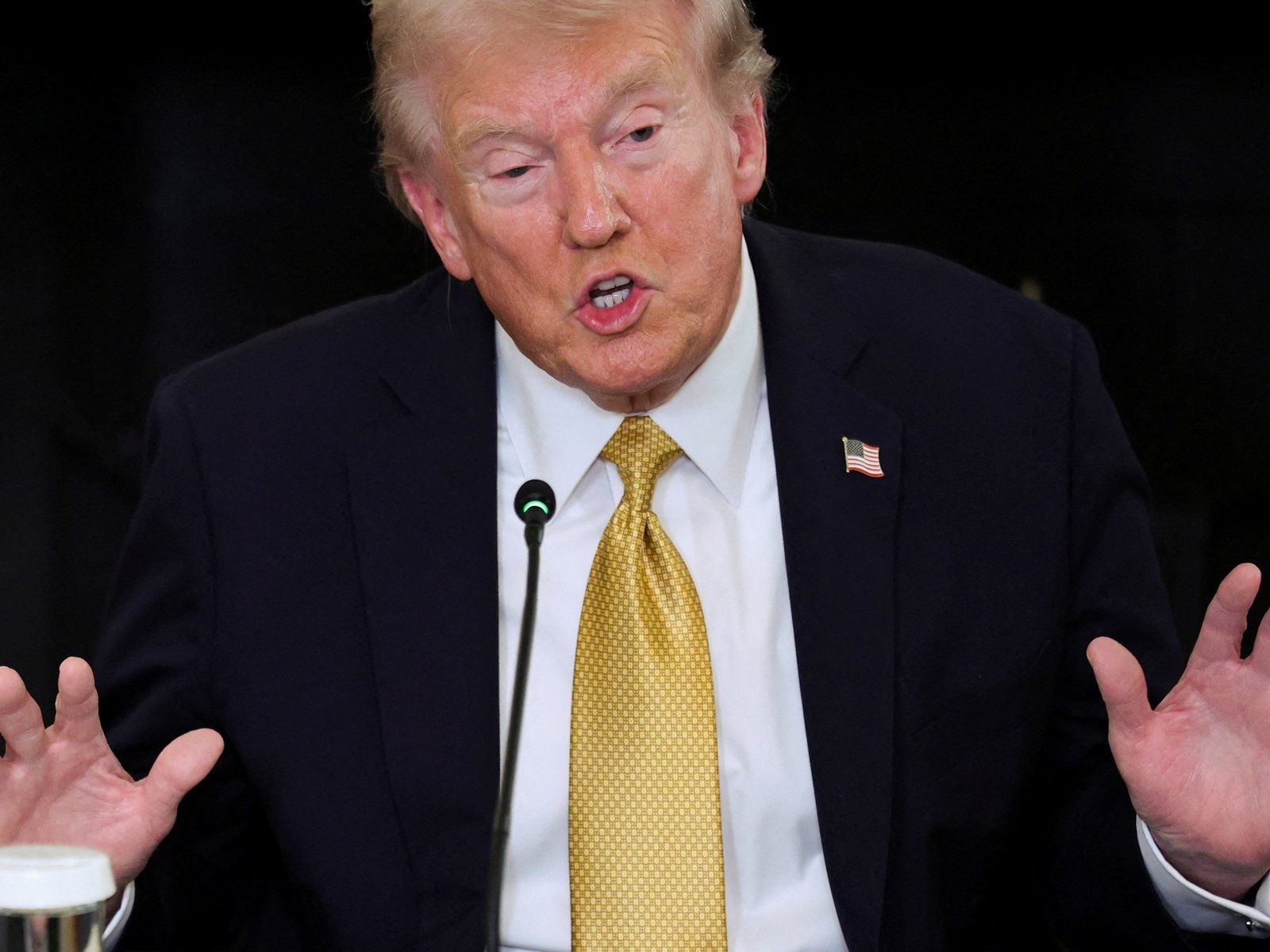
China está utilizando a Venezuela para el tráfico de fentanilo», denunció hoy Donald Trump -aunque sin pruebas- en una afirmación durante una mesa redonda sobre la lucha contra los carteles de la droga y el tráfico de personas en la Casa Blanca. «Pronto veremos acciones en tierra en Venezuela», declaró al abrir la mesa redonda.
Trump anunció que su primera pregunta a Xi Jinping en su próximo encuentro la próxima semana se centrará precisamente en el fentanilo, por el cual su administración ha impuesto aranceles a Beijing.
Hasta ahora, Estados Unidos ha llevado a cabo operaciones marítimas contra supuestas embarcaciones de narcotraficantes en aguas internacionales.
En tanto, al menos un bombardero B-1B estadounidense sobrevoló el mar Caribe frente a la costa de Venezuela, según datos de seguimiento de vuelos. Se trata de la segunda demostración de fuerza de aeronaves militares estadounidenses en una semana.
El vuelo del bombardero —que el presidente Trump posteriormente afirmó falsamente que nunca ocurrió— se produce mientras Washington continúa una campaña militar contra presuntos narcotraficantes en la región, desplegando fuerzas que han suscitado temores en Caracas de que el objetivo final sea un cambio de régimen.
Datos del sitio web de seguimiento Flightradar24 mostraron un B-1B volando hacia la costa venezolana el miércoles por la tarde antes de revertir su rumbo y dirigirse al norte, tras lo cual desapareció de la vista.
Al ser preguntado en un evento en la Casa Blanca sobre los informes de que Estados Unidos había enviado B-1B cerca de Venezuela, Trump respondió que «eso es falso» y añadió que Estados Unidos «no está contento con Venezuela por muchas razones».
Video
Dos muertos tras el ataque de EE.UU. contra otro supuesto barco con drogas.
El último vuelo tuvo lugar aproximadamente una semana después de que bombarderos B-52 estadounidenses sobrevolaran la costa venezolana durante varias horas.
«No creo que vayamos a pedir una declaración de guerra contra los cárteles de la droga«, dijo Donald Trump en respuesta a una pregunta sobre si no sería más fácil hacer tal declaración dadas las continuas redadas a embarcaciones de presuntos narcotraficantes.
Las operaciones ahora se abrieron también al Pacífico, cerca de las costas de Colombia, donde militares estadounidenses hundieron ayer una lancha presuntamente del narcotráfico con dos personas.
Esto llevó a una dura reacción desde Bogotá. El presidente colombiano Gustavo Petro acusó a Estados Unidos de cometer «ejecuciones extrajudiciales» como parte de sus operaciones militares en el Caribe y en el Pacífico para frenar el narcotráfico en estas rutas.
«Este tipo de maniobras violan el derecho internacional y constituyen ejecuciones extrajudiciales, ya sean traficantes o desconocidos», declaró Petro en rueda de prensa. «En ambos casos, esto representa un uso desproporcionado de la fuerza, prohibido por el derecho internacional humanitario», añadió.
El presidente Nicolás Maduro reveló que Venezuela cuenta con 5.000 misiles tierra-aire portátiles rusos para contrarrestar el despliegue de las fuerzas estadounidenses en el Caribe.
Washington ha desplegado aviones de combate furtivos y buques de la Armada en el Caribe como parte de lo que denomina esfuerzos antinarcóticos, y ha destruido al menos ocho embarcaciones que, según afirma, contrabandeaban drogas desde Venezuela hacia Estados Unidos
El ministro de Defensa de Venezuela dijo que cualquier operación de la CIA contra su país «fracasará», luego que Trump autorizara operaciones de inteligencia contra objetivos del chavismo.
Estados Unidos desplegó en el Caribe una flotilla de destructores, un submarino y barcos con fuerzas especiales para operaciones militares que llevaron al bombardeo de lanchas «narcoterroristas» procedentes de Venezuela.
Venezuela asegura no obstante que se trata de un plan para derrocar al presidente Nicolás Maduro. Trump autorizó la semana pasada las operaciones encubiertas.
«Sabemos que la CIA está presente no solamente en Venezuela, sino en todas partes del mundo», dijo el ministro Vladimir Padrino. «Podrán meter no sé cuantos cuerpos adscritos a la CIA en operaciones encubiertas desde cualquier flanco de la nación y cualquier intento fracasará».
Padrino supervisó una nueva ronda de ejercicios militares en estados costeros de Venezuela.

 DEPORTE2 días ago
DEPORTE2 días agoUniversidad de Chile vs. Lanús, por la Copa Sudamericana: día, horario y cómo verlo por TV

 CHIMENTOS2 días ago
CHIMENTOS2 días agoAdabel Guerrero confesó de qué famosa está enamorada y que le encantaría tener relaciones: «La China Suárez me sorprendió con su belleza»

 ECONOMIA3 días ago
ECONOMIA3 días agoScott Bessent oficializó el swap con la Argentina y afirmó: “No queremos otro Estado fallido en América Latina”















